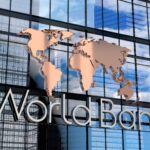Southeast Asia’s growth momentum can weather El Niño
Southeast Asian economies face kinder but ever-challenging times ahead in their quest to retain their title as global growth leaders.
There’s a Chinese proverb that says “The higher you grow, the deeper you bow.”
In this case, to sustain the momentum, countries in the subregion have to weather elevated inflation (particularly for food), high interest rates, and weak external demand amid China’s slowdown. Local currencies depreciated and stock markets slid for most of 2023, moving in step with global counterparts against the more competitive US dollar. Still, developing Asian economies remain promising spots for investment.
Looming dry spell
Rice prices largely dictated inflation trends in Southeast Asia, with some economies suffering more than others. Inflation peaked in January 2023 and has since declined – Thailand even recorded a -0.83 per cent pace in December – but the rest of the region saw an uptick around August just as India began its ban on non-basmati rice exports.
The persistent threat of a dry spell has kept rice prices up and markets jittery amid fears that other top rice exporters like Thailand and Vietnam will impose similar rice trade restrictions to prioritize domestic supply. As seen in Graph 1, inflation picked up among rice-importing nations particularly in the Philippines, now the world’s top rice importer, to price in such fears. Indonesia saw a temporary uptick in August, followed by a downtrend in the succeeding month.

Rice is a culturally and politically significant crop in this part of the world, and is weighted heftily in consumer baskets. Scientists warn that the drought is likely to persist into early 2024, meaning farm yields are likely to suffer for longer and keep food prices high. El Niño woes worsen continuing food supply disruptions stemming from Russia’s invasion of Ukraine. High transport costs due to elevated oil prices keep the price of food and other basic goods up.
The Asian Development Bank noted that the impact of extreme weather conditions could be “disproportionately severe” for some countries more than others, such as Cambodia and Myanmar where agriculture accounts for over 20% of national output. Myanmar faces a second threat to its power sector as the country, along with Laos and Vietnam, rely heavily on hydropower.
Rates diverge
Varying inflation trends also demand different levels of aggressiveness among central banks in tempering 2023’s price hikes. For example, the Bank of Thailand has raised interest rates for five consecutive times to reach a decade-high of 2.50 per cent. Vietnam’s central bank did the opposite by reducing the key rate four times last year, clearly to promote greater economic activity as loans turn cheap in the face of higher borrowing costs elsewhere.
This divergence in key interest rates helps explain disparities in terms of attracting foreign investments.
Average daily trades across six of ASEAN’s biggest markets show Thailand leading the pack, followed by Singapore and Indonesia. Meanwhile, the Philippines is a far bottom as inflation remains the highest in the region.

Regional currencies have also weakened against the US dollar, with idiosyncratic conditions like softer domestic growth numbers exerting further pressure on exchange rates.
The general weakness in the manufacturing sector, however, has dented appetite towards the region. Manufacturing within ASEAN fell in December based on the Purchasing Managers’ Index, with factories reporting fewer orders and reduced output volumes. Factories in Malaysia reported a 16-month stretch of a PMI score below 50, indicating a sustained contraction in factory output. The Chinese economy’s slowdown is pulling down global factory activity, although some countries are benefiting from the so-called “decoupling” trend as some businesses pull out their operations from the mainland. Warmer diplomatic ties between Chinese President Xi Jinping and US President Joe Biden, however, can push away some of the pessimism towards China’s economy.
We believe that Southeast Asia will remain the center of global growth for years to come despite some declines observed post-pandemic. Private consumption remains robust even in the face of rising inflation as industries are sustaining their recovery, if not fully recovered already.
Investors taking the long view will find that developing economies in Southeast Asia will buck the sluggishness seen in the West despite more competitive yields in countries like the United States. Free trade within ASEAN and its partner states under the Regional Comprehensive Economic Partnership is a big plus for global firms looking to penetrate and expand in the region, more so with the Philippines formally joining the trading bloc earlier this year.
This is exactly why taking positions in rapidly growing economies like Vietnam, the Philippines, and Indonesia is a good idea, as robust domestic demand more than compensates for the slow but sure yields in developed nations. With the Fed telegraphing that it is done raising rates and is looking for the perfect time to unwind previous hikes within 2024, investors will surely come knocking at the doors of Southeast Asia’s growth centers sooner rather than later.






